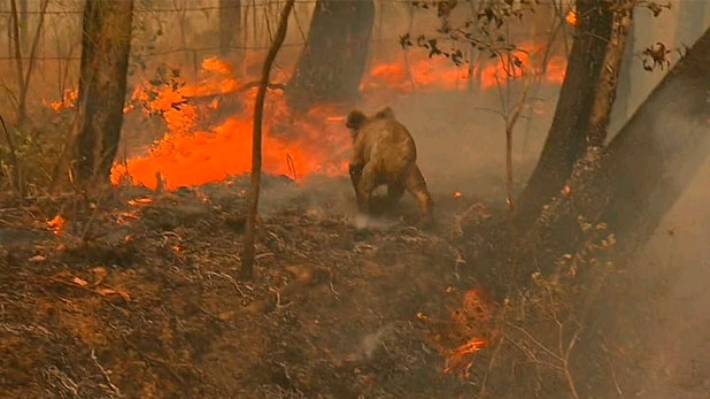
Wild Fires
by Nigel Franks, Saturday 4 January 2020
As Australia is burning the climate change deniers are out in force trying to convince people that nothing is going on. Their first approach is to only look at a small part of the picture. In order for a wildfire to start there are generally considered to be three things necessary: fuel, dry and warm weather and a source of ignition.
Deniers are focussing on just a small part of the picture to muddle the issue. For example, some of them argue that there is too much fuel (dead vegetation) around because of so-called "green" policies that prevented the authorities from carrying out preventive burning or from cutting down trees to make fire breaks. There is no clear evidence for this: in some areas the authorities have been spending more on prevention, but fires have broken out anyway.
Deniers often also claim that the fires are all man made and point to arson as the cause. While this may be true in some cases, fires can start naturally from spontaneous combustion of vegetation and from lightning. It may be news to people that so called "dry lightning" can occur without the need for a thunderstorm and rain to fall.
In any case, their arguments distract from the main issue: climate change contributes to conditions that make wild fires more likely to be bigger and to persist for longer. However, deniers even try to deny this by showing dubious statistics that seem to show no trend. If you think about it, it's surprisingly difficult to find an appropriate measurement. One difficulty is that fires obviously burn the fuel that enables them to start and to spread. It's obvious that an intense and widespread fire will use up all the fuel in the area and damage the vegetation to such an extent that there may be no significant stuff to burn for following years. So comparing number of fires and area burnt with previous years may be misleading. Statistics should also take into account the changes in policy made by the authorities after a fire: they will tend to take stronger preventive measures immediately after the fire but over the years they may become complacent and slacken off.
Another factor is changes in the way that the land and forests are used. In the USA for example, although the amount of forest has grown since the 1920s its use has changed with more being kept as national parks and less used for logging.
Another metric could be economic damage caused, but this is not only intrinsically unreliable, but also open to abuse. It's intrinsically unreliable because it depends on random factors: the path of the fire is determined by the wind, the terrain, the fuel available, its proximity to buildings etc. If by chance a large fire occurs far from areas used by humans it will cause less damage than a tiny fire in a built up area. There is also the possibility that once an area becomes prone to fires then people will not bother to rebuild infrastructure and buildings, so that two identical fires in the same place could have different economic
effects simply because there was nothing to be damaged in the second fire.
I saw a paper where the statistics for damage had, in my opinion, been abused. The authors looked at the number of buildings destroyed per fire. At first sight that seems OKish. However they then "normalised" the data by dividing the number of buildings destroyed by the total number of buildings in the state/territory. This created a bias that reduced the percentage of buildings destroyed. That's because 80% of the population growth and therefore the majority of new buildings were in the major cities. And wild fires have until now been very rare in major cities. So even if the number of buildings destroyed had remained the
same every year, the "normalisation" would have shown a falling trend because it would have been a smaller proportion as the total number of buildings would have been bigger.
So there is a lot that we don't know and can't clearly determine from simply looking at figures and statistics. So what do we know? For that we have to go back to the necessities for a wild fire: fuel, the right conditions and an ignition source. What will climate change do? Well obviously higher temperatures mean that vegetation dries out quicker and if it is combined with lower rainfall, then there is more chance of plants dying. This is clearly going to provide more fuel. Higher temperatures and drier conditions are also ideal for enabling a wild fire to expand especially if it is windy as well. A lack of rainfall also makes it harder to actually put out a fire. Spontaneous ignition of vegetation requires dry and warm conditions which climate change is
likely to bring. So the bottom line is that although it's practically impossible to say exactly how much climate change has contributed to wild fires, it's clear that it does make a contribution and that it is extremely likely to get worse.
